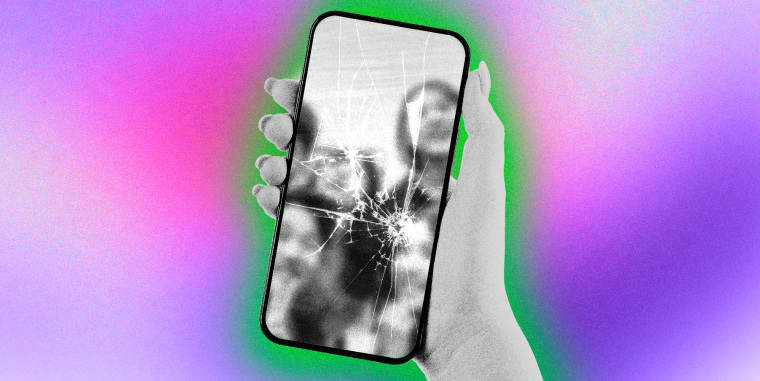After a TikTok user of Vietnamese descent posted a video earlier this month with a caption about what he saw as some of the pitfalls of all-Asian friend groups, it sparked a viral discourse about what some called out as toxicity and bias within some of the communities.
Users described the friend groups as what they saw as creating and upholding a specific standard of Asianness, prioritizing East Asian heritage, light skin and upper-middle-class backgrounds. Anyone who doesn’t fit into this box, some TikTok users said, may be excluded or ridiculed.
“Idk what it is, but I genuinely do not like Asian friend groups,” TikToker Aden Vu, 18, said in the original video, which received 1.8 million views and dozens of stitches, or response videos. In the caption of his video, he described the groups as “toxic, gossipers, and rude.”
While Vu did not elaborate on what he was referring to, many viewers seemed to instantly understand him. Fellow creators and commenters shared their experiences feeling judged, excluded or bullied because they weren’t “Asian enough.”
But one expert said users shouldn’t be quick to generalize.
“There’s a lot of diversity within the Asian American experience. So these quote-unquote toxic Asian friend groups, or monolithic Asian friend groups, monoracial Asian friend groups, are just one experience,” said Yuki Yamazaki, a clinical assistant professor of counseling psychology at Fordham University who has studied Asian Americans, multiracial Americans and colorism.
Still, she said the trend highlights how intersections of a person’s race, class and color may affect how they are treated. And while many of these groups may appear to coalesce around race or ethnicity, they may also bond over shared class and socioeconomic status, she said. This can manifest in shared hobbies that might inadvertently exclude people of other cultures or lower means — including, as some users pointed out, raving, going out for Korean barbecue and buying boba.
Ivan Kao, 23, posted a video about his own experience being in an all-Asian friend group and later moving away from them. He began to question the behavior of these groups after being exposed to more people from different backgrounds.
“There is so much more to the world and life than what we are comfortable with,” Kao said in an email to NBC News. “After I took a step away from that community, I’ve experienced and learned so much that I would’ve not been able to if I never stepped out of my echo chamber of friends who mainly look and act like me.”
Kao said he thinks there is a fine line between creating a friend group around shared experiences and exclusion.
“I don’t think they purposely intend to only befriend others with the same background and interests, but it more so subconsciously happens just because people tend to gravitate more towards those with similarities with them. However, when one only associates themselves with people who are similar to them, people can eventually become judgemental and demeaning towards those who are different from them,” he wrote.
Yamazaki said there is not a singular problem or cause for the conflicts described in the TikTok videos because Asian Americans have a wide range of experiences. She said the community is constantly having dialogue about what it means to be Asian American considering the various ethnic identities within Asia. However, conversations around Asianness are often centered around East Asianness and not always inclusive of South and Southeast Asian perspectives, Yamazaki said.
Nazah Mazid, a 25-year-old Bengali American, posted a TikTok sharing her own experience of exclusion from these groups. She said that she felt “singled out” in one of these friend groups because she is a brown woman.
“I think in their case, there’s a certain Asianness that you have to be,” Mazid told NBC News in a phone interview.
Mazid shared that some of her former friends would not consider her as Asian because she is South Asian. However, she said exclusion was also based on class, color and race.
“I never really knew if I was Asian enough,” Mazid said. “And these East Asian [friends] in particular never really helped that cause, never made me feel like I was one of them, even though East Asians and South Asians alike share a lot of family values and ideals and morals when it comes to their families and their stories of coming to America and whatnot.”
Yamazaki said the standard of Asianness described as a prerequisite of these friend groups can perpetuate the model minority myth. The ideal upholds lightness, success and wealth as desirable traits in social settings.
Vu said some people accused him of having internalized racism, being “self-hating” or overgeneralizing Asian Americans. He also said a few viewers called him a “white sympathizer” because of his video. However, he said that the amount of people sharing similar experiences with these friend groups shows that there are social issues that need to be addressed among Asian Americans.
“I’m really glad that I was able to open up a field where anybody can join in on this conversation and put in their input and learn from it,” Vu said in a phone interview.
Mazid said that Asian Americans should take this discourse as an opportunity to evaluate the friendships they are in and consider what behaviors the group has.
“Whether you’re East Asian or otherwise, definitely check yourself and ask yourself, ‘Why am I friends with these people?’” she said. “‘Are these people making me a better person? What am I bringing to a friendship with these groups of people?’”

